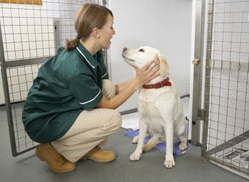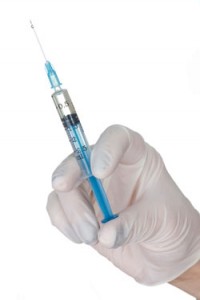For some procedures, your pet will need to be administered general anesthesia so that he or she will be comfortable and unconscious. Many pet owners worry about their pets being administered general anesthesia. We can assure you that modern anesthesia is generally quite safe; to further lower any risk, all patients prior to surgery are given a complete physical examination and “pre-op” blood work analysis is completed to try to ensure there are no underlying health issues. In addition, we follow a specific anesthetic protocol, which includes intravenous catheter placement, intravenous fluid administration and monitoring of vital signs during the procedure, to ensure the safety of our patients.
We begin most general anesthetic procedures by administering a sedative to help the pet relax and decrease any anxiety. We then administer an intravenous drug to provide complete anesthesia and place a breathing tube into the patient’s trachea (windpipe). To maintain the state of unconsciousness, we deliver a gas anesthetic in combination with oxygen through the breathing tube.
Following the procedure your pet will be closely monitored until they are able to swallow and sit sternal. During the monitoring period, their nails will be trimmed and ears will be cleaned as a courtesy. Once they are completely awake they will rest and recover comfortably in the kennel recovery area, which is always visible to an animal care nurse.


